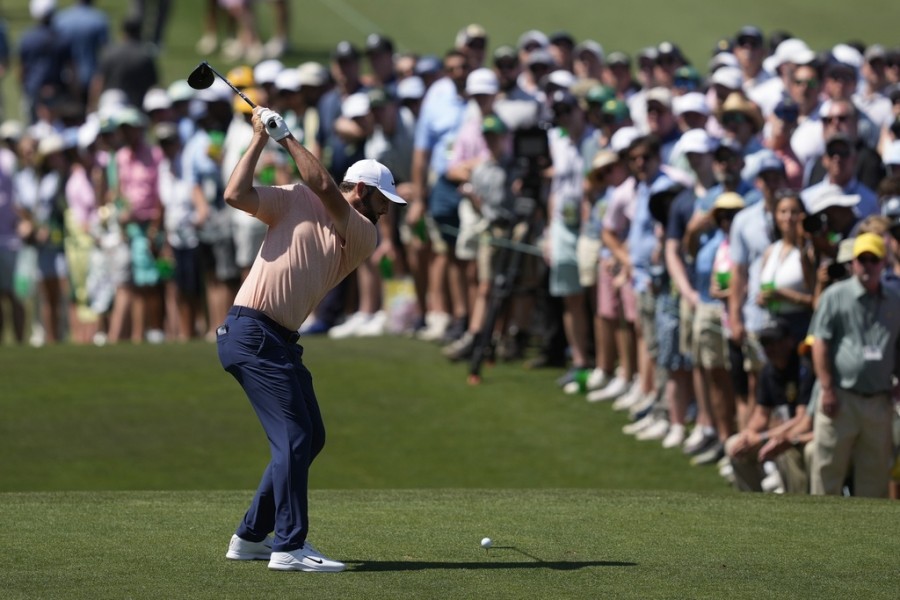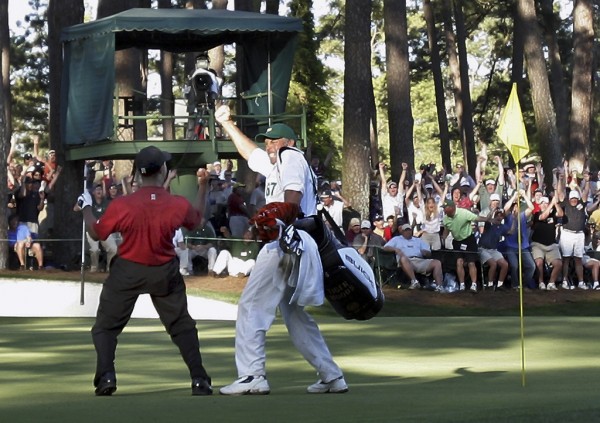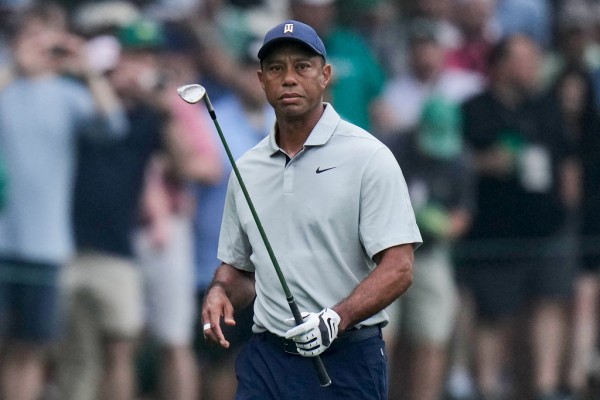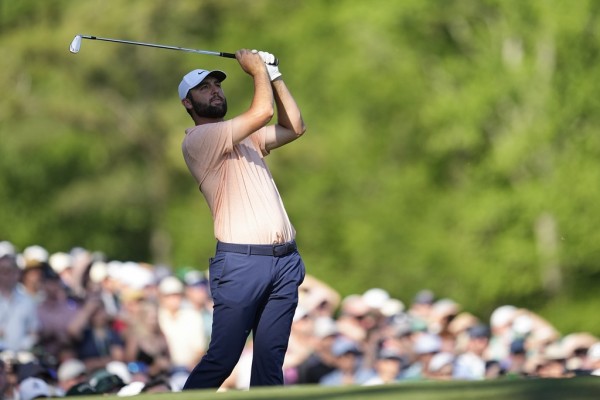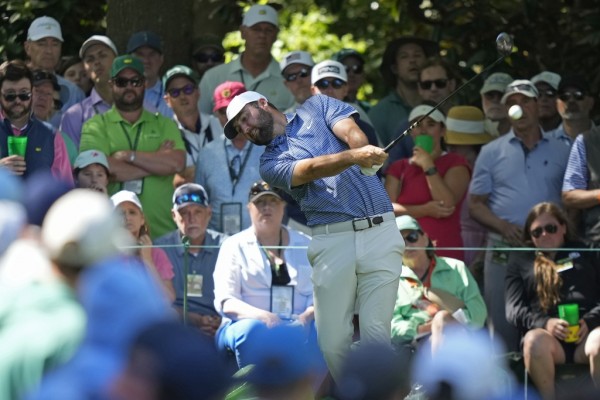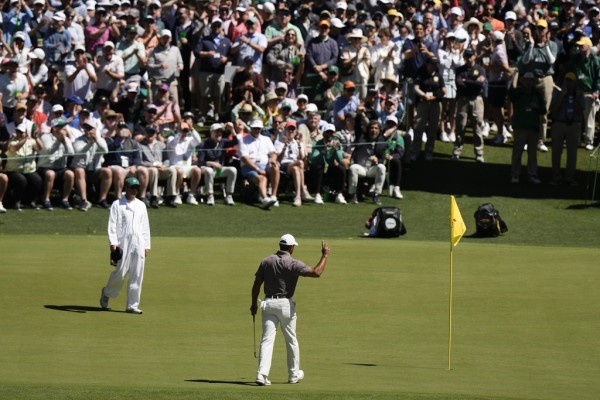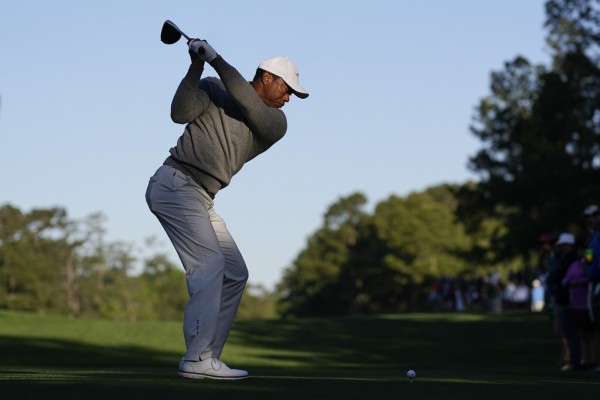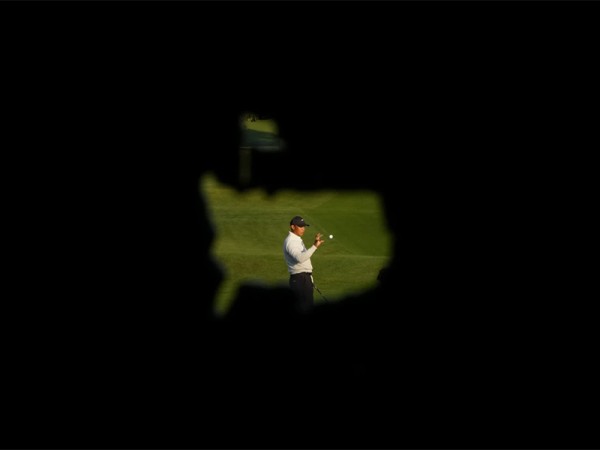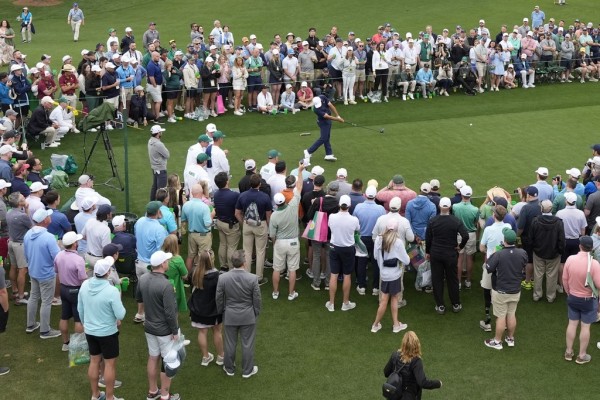AUGUSTA, Ga. — The shortest par 4 at Augusta National is the same distance — all of 350 yards — as it was when the first Masters was held in 1934. There are no water hazards to be found. There is one bunker left of the green.
By modern standards, this would be considered a drivable par 4.
And yet there has been only one change to No. 3 in club history, 42 years ago, when the large bunker left of the fairway was replaced by four smaller ones.
Small wonder Alister MacKenzie considered the third hole — named “Flowering Peach” — to be as fine as any hole he designed at Augusta National.
He wrote in a 1933 letter to co-founder Clifford Roberts, “It is holes of this description that keep up one's interest in golf year after year, stimulate players to improve their game and prevent golf from becoming stale.”
No need telling that to Tiger Woods.
He was making an early charge in 2003 in his bid for an unprecedented third straight Masters title when he had to decide whether to hit iron off the tee or take driver and pound it close to the green. He hit driver into the pines, played the next shot left-handed, chipped over the green, chipped short onto the fringe and made double bogey.
Perhaps he should have read the words of Seve Ballesteros in the Masters Journal that year when he wrote that even hitting driver, “you won't always be rewarded, even with a good shot.”
“It's an unpredictable hole, full of drama," the great Spaniard wrote.
And it looks so simple off the tee — the cluster of four bunkers to the left that most players now can carry with ease, the deep bunker of the green and an elevated putting surface that always has been the hole's best defense.
It sits on a natural plateau coming from a hill, so it slopes from right to left. The best birdie chances are when the pin is back and to the right. Any pin on the shelf to the left?
“Scary,” Xander Schauffele said, a word he repeated twice more in discussing his strategy.
Even with a shot inside 100 yards, players are aiming some 25 feet to the right of the flag. Going at the flag could mean going long, leaving one of the toughest chips on the course.
Unpredictable and full of drama?
Scottie Scheffler discovered that much in 2022 when he won his first Masters. He prefers a tee shot over the bunker complex, even if it's not in the fairway. This was so far left of the fairway he was in the pine straw. His pitch rolled down the steep slope back to the fairway. And then Scheffler pitched in for a most unlikely birdie and was on his way.
“The front pin is more of a decision depending on how close I can get to the green,” Scheffler said. “But if you can get it up close to the front of the green, I think it's a smart decision always to go for it.”
That's been the prevailing thought over the last decade, especially as players are hitting it longer. Still, for a 350-yard hole with no hazards, it's not a hole where making par feels like losing a shot to the field.
“If the pin is in the back, I'm thinking 3 and hitting driver a majority of the time,” Billy Horschel said. “If the pin is anywhere else, I'm thinking 4 and I don't know what club to hit off the tee.”
Among the more memorable shots was Charl Schwartzel holing out with a wedge from the fairway for an eagle in 2011, the year he closed with four straight birdies to win by two.
The loudest moment? That belongs to 58-year-old Jack Nicklaus chipping in for birdie in 1998 that let the crowd believe — if only briefly — he could rally again.
And the weirdest? Jeff Maggert and Bryson DeChambeau share that distinction.
Maggert was leading the 2003 Masters in the final round when he tried the prudent play with an iron off the tee and found a bunker. The problem is what followed — a think gap wedge that hit the face of the bunker, ricocheted back and hit him in the chest. Back then, that was a two-shot penalty. He made triple bogey and never led again.
Then there was DeChambeau, who once referred to Augusta National as a par 67 because he could easily reach the par 5s and had the 350-yard third hole. Except his 2020 Masters fell apart on that hole when he never found his tee shot.
It didn't help that it was November and turf was soft, and there was no gallery. The ball wasn't found until after the search ended, but not before a desperate DeChambeau asked a rules official, "So you're saying if we can't find it, it's a lost ball?”


